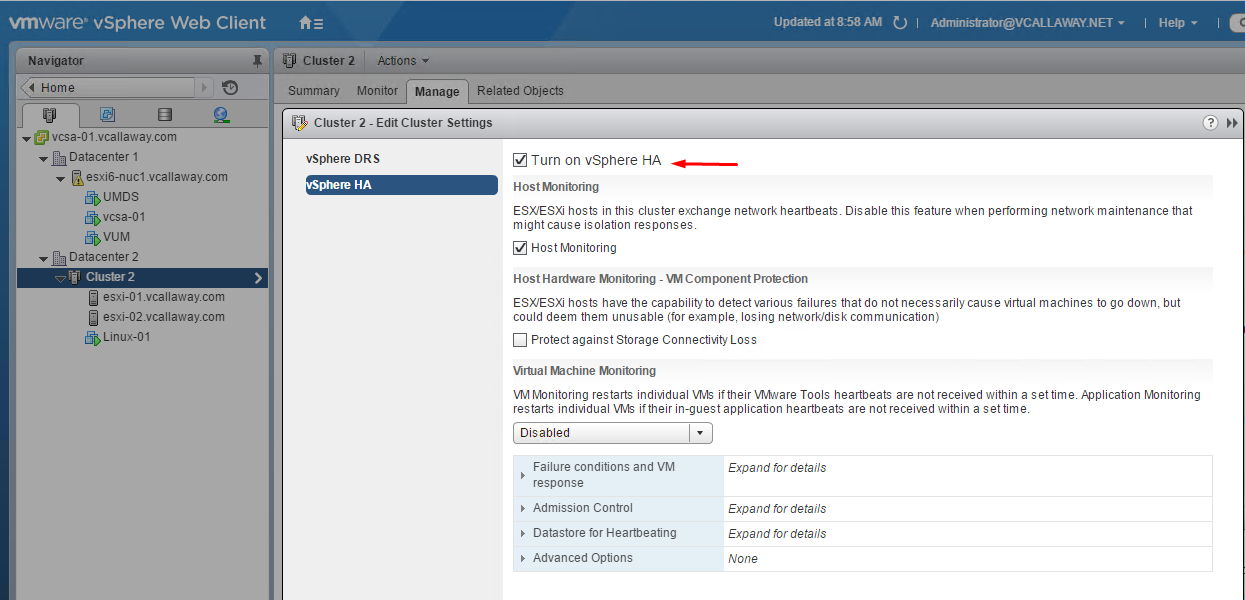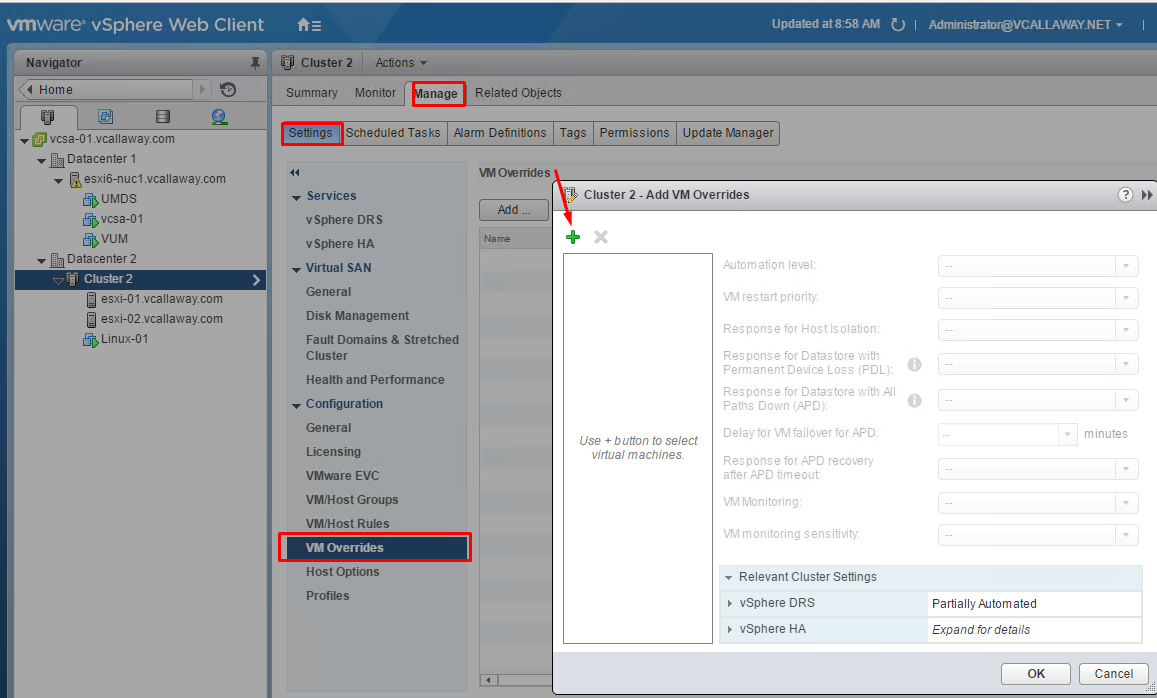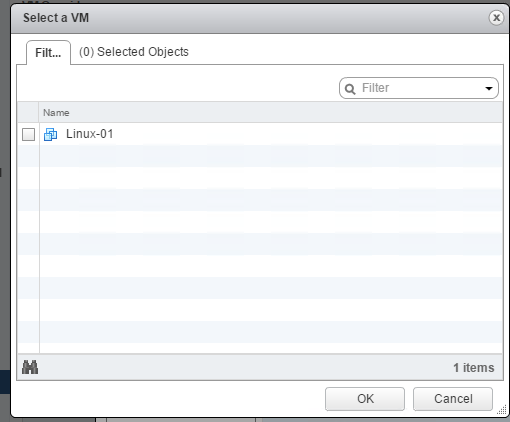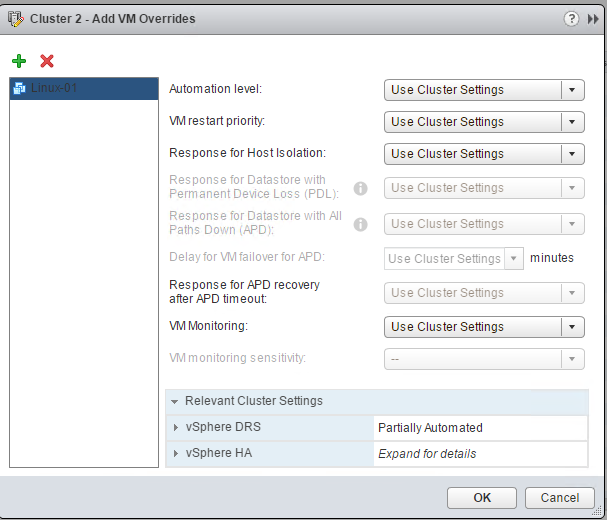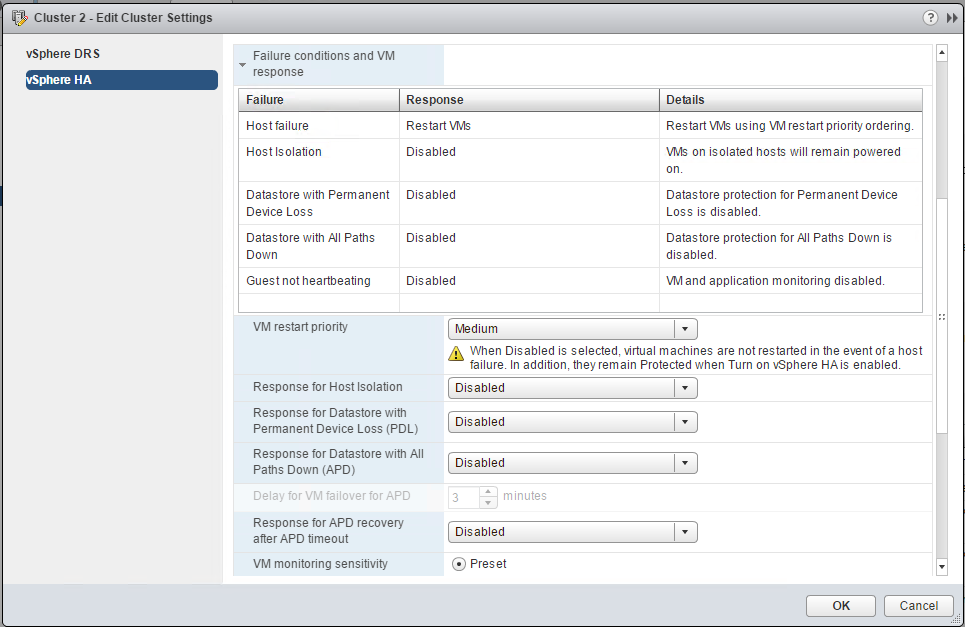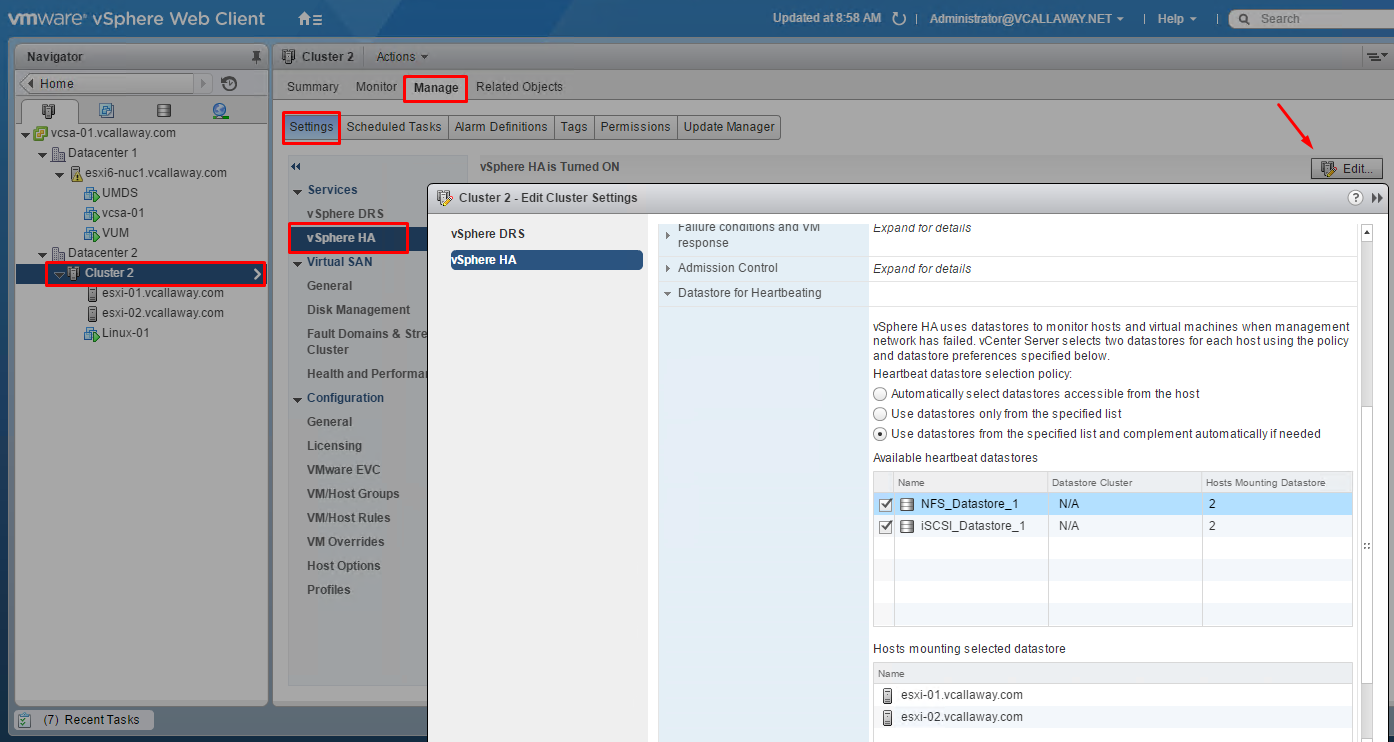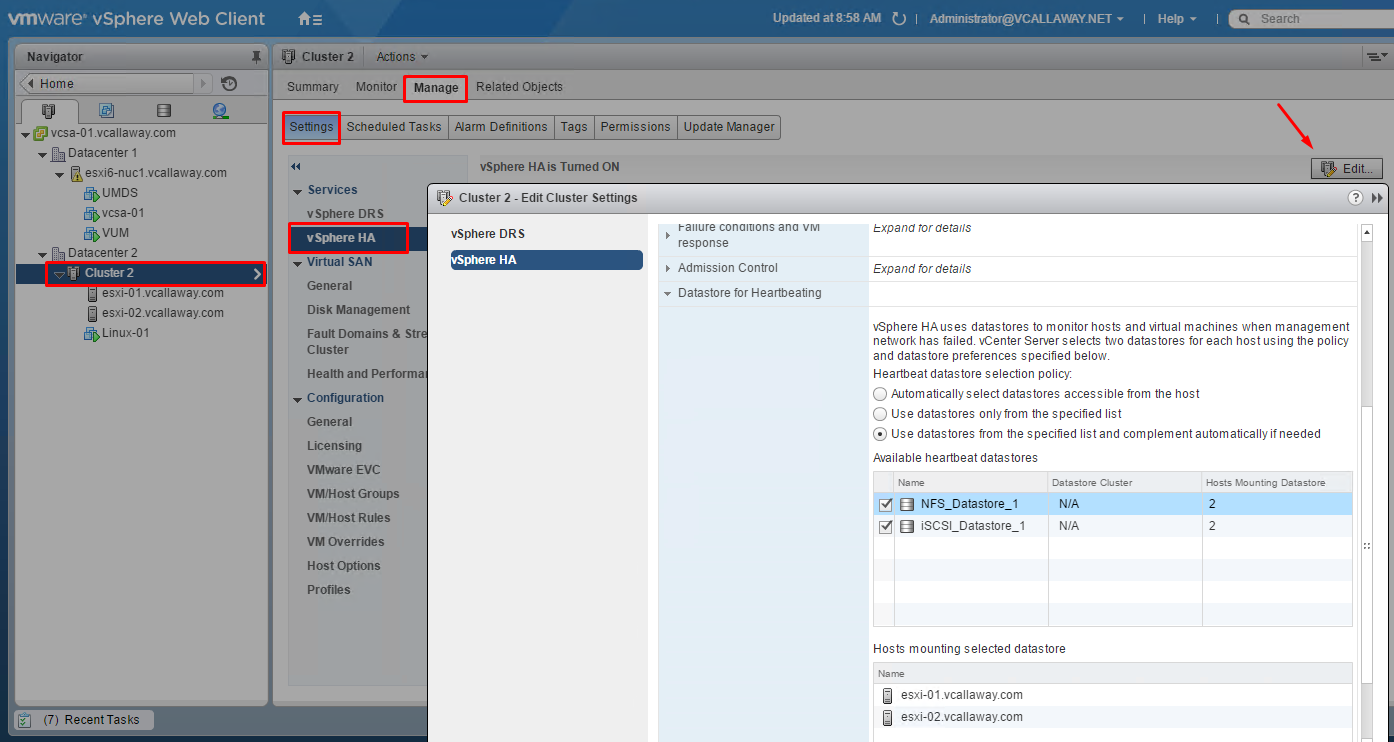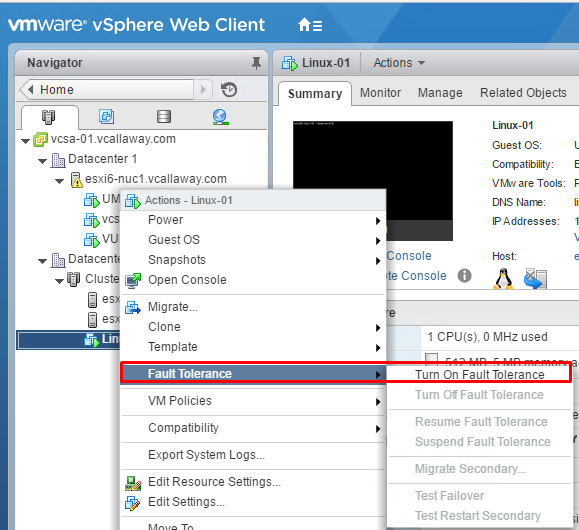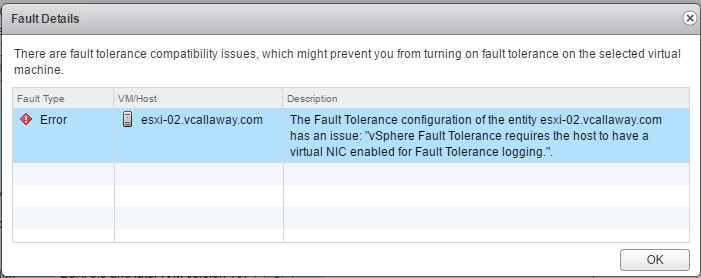Objective 4.1 Topics:
- Configure a HA Cluster to Meet Resource and Availability Requirements
- Configure Custom Isolation Response Settings
- Configure VM Component Protection (VMCP)
- Configure HA Redundant Settings:
- Management Network
- Datastore Heartbeats
- Network Partitions
- Configure HA related Alarms and Analyze a HA Cluster
- Configure Fault Tolerance for Single/Multi-vCPU Virtual Machines
Configure a HA Cluster to Meet Resource and Available Requirements
To enable your cluster for vSphere HA, you must first create an empty cluster. After you plan the resources and networking architecture of your cluster, use the vSphere Web Client to add hosts to the cluster and specify the cluster’s vSphere HA settings.
Prerequisites to enabling HA.
- All virtual machines and their configurations must reside on shared storage
- Hosts are configured to have access to the virtual VM network
- Verify hosts are using redundant management network connections
- Verify hosts are using a minimum of 2 datastores for heartbeating
Enabling HA:
Select Host Monitoring. Enabling this allows hosts in the cluster to exchange network heartbeats and allows HA to take action if it detects a failure. Additionally, Fault Tolerance recovery relies on Host Monitoring to be enabled to function properly.
The Virtual Machine Monitoring is required if we want individual VM’s to automatically restart if the heartbeats are not received within a set time.
Configure Custom Isolation Response Settings
What is Host Isolation Response?
Host isolation response determines what happens when a host in a vSphere HA cluster loses its management network connections, but continues to run. Host isolation responses require that Host Monitoring Status is enabled. If Host Monitoring Status is disabled, host isolation responses are also suspended.
A host determines if it’s isolated when it is unable to communicate with other hosts and is unable to ping it’s isolation addresses.
Host responses are:
- Power Off and restart VMs
- Shutdown and restart VMs
This can be customized on a per VM basis.
Note : If a VM has a restart priority of Disabled, no host isolation response is made.
Customize an Individual Virtual Machine
Select the VM we want to override.
We have the options to set the Automation level, VM Restart Priority and Response for Host Isolation as well.
Configure VM Component Protection (VMCP)
What is VCMP?
If VM Component Protection (VMCP) is enabled, vSphere HA can detect datastore accessibility failures and provide automated recovery for affected virtual machines.
VMCP provides protection against datastore accessibility failures that can affect a virtual machine running on a host in a vSphere HA cluster.
Note – VMCP can only be used on ESXi hosts 6.x
2 Types of Failures:
PDL – Permanent Device Loss
APD – All Paths Down
Differences?
PDL Failures – a VM is automatically failed over to a new host
APD Failures – action taken after the Delay for VM failover for APD is passed. If APD recovers before the VM Failover for APD has passed we can choose to reset the VM.
Configure Virtual Machine Responses
Configure HA Redundancy Settings:
Management Network
VMware recommends that 2 vmnic’s are used for the service console/management network on the vSwitch either in an Active/Active or Active/Standby configuration.
If you don’t there will be a warning stating that there is no management redundancy. This warning can be suppressed if necessary.
Datastore Heartbeat
vSphere HA uses datastore heartbeating to distinguish between hosts that have failed and hosts that reside on a network partition. Datastore heartbeating allows vSphere HA to monitor hosts when a management network partition occurs and to continue to respond to failures that occur
To configure:
Network Partitions
When a management network failure occurs for a vSphere HA cluster, a subset of the cluster’s hosts might be unable to communicate over the management network with the other hosts. Multiple partitions can occur in a cluster.
- Virtual Machine Protection
- Cluster Management
Configuring Admission Control
Admission Control allows you to specify whether or not VM’s can be started if they violate availability constraints.
To configure:
In the same section as Datastore Heartbeats.
Configure VMware Fault Tolerance For Single and Multi-vCPU Virtual Machines
Prerequisites
- Host must have a license for the feature
- Host must not be in standby or maintenance mode
- Virtual Machine must not be in a disconnected or orphaned state.
- The user trying to configure FT must have appropriate permissions.
To configure:
Keep in mind, the proper networking stack for FT must also be setup and configured properly or you’ll get the error below.
Once the error is resolved you will be presented with an option to be able to select which host you would like the secondary VM to run on. If other hosts are compatible.


